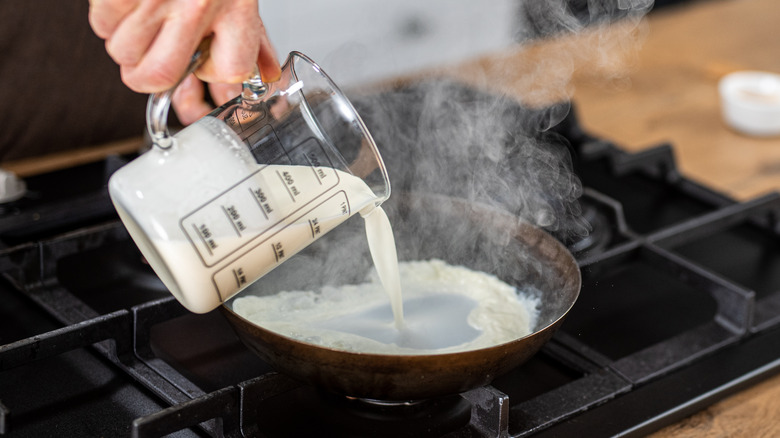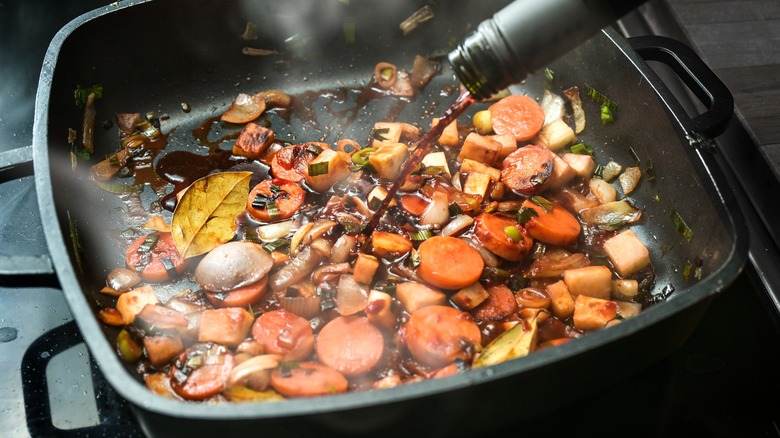The One Type Of Liquid To Steer Clear Of When Deglazing Your Pan
If you aren't already deglazing your pan after roasting or sautéeing protein or produce, consider this a public service announcement to start doing so immediately. Deglazing is a great way to make sure that the flavorful fond — otherwise known as the brown bit stuck to the bottom of the pan — doesn't go to waste. Contributing wonderful caramelized goodness, the process allows residue to effectively loosen and become the base of a sauce with the help of some liquid. However, not all liquids are equally viable.
To prevent a less than delicious result, it's wise to avoid all things dairy. This one category of liquids poses a problem mainly as milk, cream, or any other dairy-based product has a tendency to curdle when exposed to high temperatures. Given that deglazing relies on bringing liquids to a boil, this means that milk proteins are likely to coagulate.
That said, if you plan on adding dairy-based liquids to a pan sauce, it's best to do so after deglazing. Stirring in a touch of something like half-and-half towards the end of the cooking process, after the pan sauce has feverishly boiled and reduced, ensures that flavors, textures, and aesthetics can all be maintained. Since dairy is best saved for last, you might be wondering what can be used to deglaze a pan in the meantime.
Ditch dairy for these deglazing superstars
Beverages like wine, cider, beer, or even spirits like gin tend to be a common choice as alcohol molecules bond better to fat and water molecules, allowing for even the most nuanced of aromas and flavors to shine. Of course, there are also plenty of non-alcoholic options that can act as suitable candidates for deglazing.
Essentially, any liquids with some acidity can get the job done effectively. Anything from a splash of vinegar to a squeeze of citrus will work. Similarly, fruit juices and sodas will also provide a much-needed burst of tang all the while offering some sweetness. In contrast, you can add earthiness or umami by choosing to deglaze with a more neutral stock.
No matter what you use, remember that deglazing is best done modestly. Don't get carried away when adding liquid as an abundance of wine, vinegar, or juice all have the potential to negatively impact flavor as they can take significantly longer to reduce in higher volumes.

